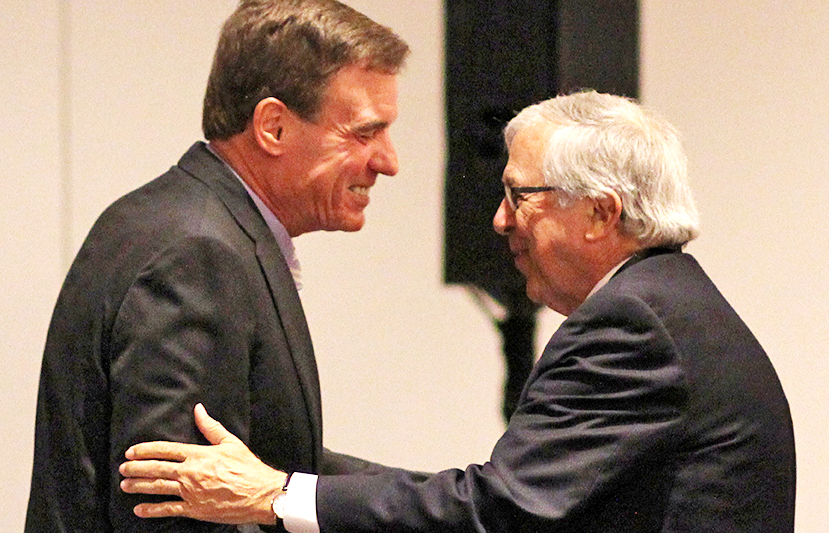Global thought leaders lay groundwork to meet growing infrastructure demands

International leaders focused on ways to help cities overcome growing demands and shrinking resources at the recent annual International Symposium for Next Generation Infrastructure, hosted by Virginia Tech's Virginia Bioinformatics Institute and the Global Forum on Urban and Regional Resilience in Washington, D.C.
“One of the most important things we accomplished here was defining resilience and how we will move forward with that in mind,” said Charles Steger, president emeritus of Virginia Tech and executive director of the Global Forum on Urban and Regional Resilience.
Resilience, in this case, is the capacity of individuals, organizations, businesses, and governments to survive, adapt, and grow despite chronic stresses and shocks, according to Andrew Salkin, chief information officer of the Rockefeller Foundation’s 100 Resilient Cities Project.
For example, demands for roadway maintenance, mass transportation, emergency response, and electrical power continue to increase. Natural and manmade disasters occur. And population continues to grow.
A report from the United Nations Department of Economic and Social Affairs indicates the current world population of 7.3 billion will reach 9.7 billion in 2050, with about 70 percent of the people living in cities.
To cope, people and technology will change, each transforming the other.
“Changing the structure of interactions changes everything, including and especially science,” said Christopher Barrett, executive director of Virginia Bioinformatics Institute, a university level institute at Virginia Tech that brings together experts in an array of fields, including network dynamics, simulation science, and social decisions and analytics.
The development of a systems analysis approach toward a comprehensive national infrastructure plan is a way forward, not only for increasing resilience, but for maintaining U.S. competitiveness.
“Our infrastructure is at a comparative disadvantage with the rest of the world,” said U.S. Sen. Mark Warner in his keynote address.
Speakers shared ideas to increase infrastructural resilience. For example, Guy Dixon, the founder of Networked Infrastructure National Architecture of Australia, discussed his design for a new access panel that makes use of curb space in roads to connect and protect electrical wires while capturing stormwater runoff.
“We must get out of the way and let people innovate,” said Garry Bowditch, the chief executive officer of the SMART Infrastructure Facility at the University of Wollongong.
The conference is part of a symposia series that brings together leaders from industry, government, and academia to begin a coordinated global infrastructure research program focused on long-term infrastructure and land use planning.







